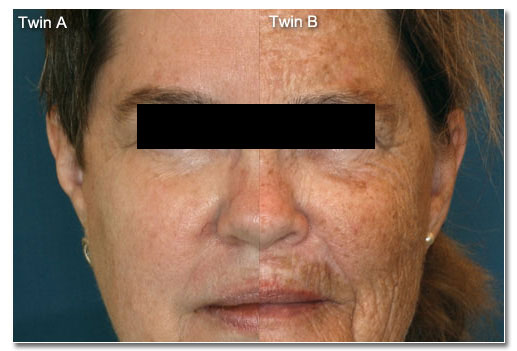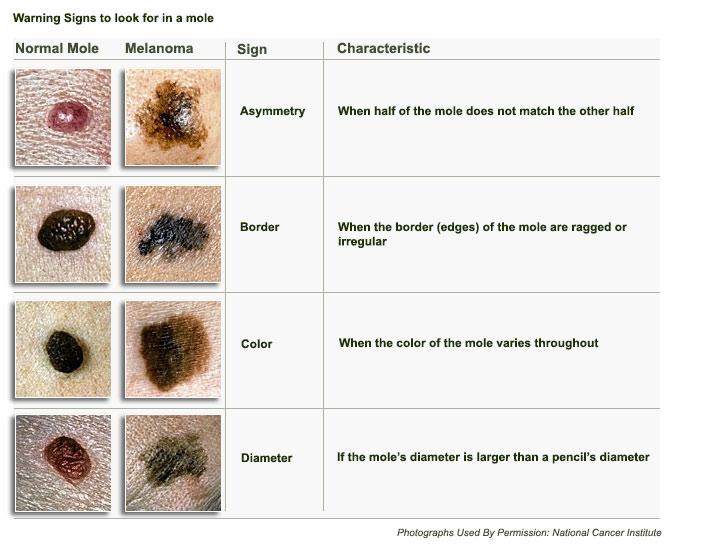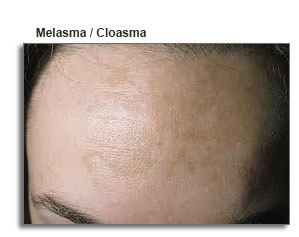
This image is taken from a study on identical twins, one of whom is a smoker.. the image is a split face- the( R ) side being from the non-smoker, the (L) side being from the smoker. for more info about how smoking damages *Effects Will Vary* see –Ways Smoking Affects Looks.
Smokers will develop more extensive and severe sun damage, due to the extensive degradation of metalloproteins or building blocks of collagen, plus the pro-carcinogenic effects of multiple chemicals present in cigarette smoke.
It is important to have a thorough inspection of areas where brown spots are present by a physician, as pigmented lesions can run the gamut from benign solar lentigines, seborrheic keratoses, through atypical melanocytic naevi to outright malignant melanoma.
Risk factors for skin cancer include multiple atypical naevi, a bad sunburn at a young age, use of sunbeds, family history of skin cancer.

1 in 7 Canadians will develop invasive skin cancer in their lifetime.
There are 3 main types of skin cancer
- Basal Cell Carcinoma– which is most frequently seen in the triangular area bounded by the nose and eyes, and typically looks like an ulcer with pearly edges;
- Squamous Cell Carcinoma- appears as rough or warty lesions, typically on the temples or backs of the hands.
- Malignant Melanoma, which looks like a mole, and can occur anywhere on the body. Danger signs to watch out for in a mole or freckle are:
- uneven or changing pigmentation
- enlarging size
- uneven borders or satellite lesions
- bleeding or itching
All suspicious lesions should be biopsied to rule out cancer.
At The Lazer Room, all patients are screened by Dr Hyland prior to treatments for brown spots, whether it be a series of AFA peels or IPL (intense pulsed light) or Fraxel Dual.

 Melasma is a brown or bluish-grey skin discoloration typically seen in women age 25-50, occurring mainly on the upper cheeks, upper lip, forehead and chin, more common in women of Hispanic or Asian ethnicity, who have been exposed to strong sunlight, and is often associated with hormonal factors (pregnancy, birth control pills, or Hormone Replacement Therapy). The pigmentation is contained in the deep layers of the skin and responds poorly to IPL, great results are seen with Fraxel Dual Laser (see below). *Individual Results May Vary
Melasma is a brown or bluish-grey skin discoloration typically seen in women age 25-50, occurring mainly on the upper cheeks, upper lip, forehead and chin, more common in women of Hispanic or Asian ethnicity, who have been exposed to strong sunlight, and is often associated with hormonal factors (pregnancy, birth control pills, or Hormone Replacement Therapy). The pigmentation is contained in the deep layers of the skin and responds poorly to IPL, great results are seen with Fraxel Dual Laser (see below). *Individual Results May Vary
